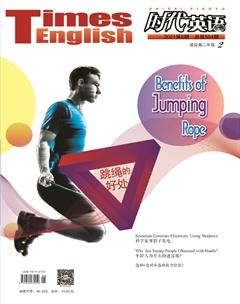Why Are Young People Obsessed with Hanfu? 年輕人為什么癡迷漢服?
Hanfu, meaning “Han clothing”, is based on the idea of donning costumes worn in bygone eras by Chinas Han ethnic group. Some of the most popular styles are from the Ming, Song and Tang dynasties.
About three-quarters of hanfu customers are between 16 and 24 years old. Members of this generation often see it as a way to rediscover and engage with their countrys traditional culture.
The main features of hanfu include collars, upper garments in the style of a skirt, jade ornaments and a sash, according to Wen Run, professor of textile design and industrial economics at Donghua University.
Materials such as brocade and yarn, along with traditional craftwork, including embroidery, are also hallmarks of the attire.
It has seen a resurgence in recent years, despite some initial public resistance. Its pretty exciting to see young Chinese people building up their self-confidence and developing their individuality to show the world what they love. For more Chinese, this dress code might become a good starting point to further explore the beauty of the countrys traditions.
Yang Na is one of those hanfu enthusiasts who have been dedicated to the revival of the costume for over a decade. As a media professional, she wears hanfu, talks about it and has even written a book about it, titled Hanfu Returns.
Song Xuan, a student from Harbin, in northeast Chinas Heilongjiang Province, said, “Hanfu is my daily outfit. In summer, I wear it alone. In winter, Ill put a warm sweater inside and a down coat outside.
Hanfu enthusiasts refer to themselves online as tongpao, which literally means wearing the same type of gown as a symbol of comradeship.
After more than a decade of development from the so-called “fantastical dress” to daily attire, hanfu has been through quite the change in status.
Whatever the controversies behind the new trend, some traditional beauty on modern streets will indeed add a bit of vitality and diversity to urban life.
漢服意為“漢民族傳統服飾”,是基于人們穿過去時代的漢族服裝這一理念。漢服最流行的款式來自明朝、宋朝和唐朝。
大約四分之三的漢服消費者年齡在16歲至24歲。這一代人常常把漢服看作重新發現和接觸中國傳統文化的一種方式。
東華大學紡織品設計與產業經濟系教授溫潤稱,漢服的主要特征包括領子、裙狀上衣、玉飾和腰帶。
織錦緞、紗線等材料,以及刺繡等傳統工藝也是漢服的標志性特征。
盡管最開始出現了反對的聲音,但近年來,漢服仍然流行了起來。看到中國年輕人樹立自信,發展個性,向世界展示他們的所愛之物,這是頗為令人興奮的事。對于更多的中國人來說,這一著裝可能會成為他們進一步探索中國傳統之美的一個良好起點。
楊娜是一名漢服愛好者,她致力于漢服的復興已經超過十年。作為一名媒體從業人士,她穿漢服,聊漢服,甚至還寫過一本關于漢服的書,書名是《漢服歸來》。
來自中國東北黑龍江省哈爾濱市的學生宋璇說:“漢服是我每天的行頭。夏天,我就單穿漢服。冬天,我會在漢服里面穿一件暖和的毛衣,外面再穿一件羽絨服。”
漢服愛好者在網上稱自己為“同袍”,這個詞的字面意思是“穿著同一種服裝”,象征著同志情誼。
經過十余年的發展,漢服從所謂的“奇裝異服”到日常著裝,經歷了相當大的地位變化。
不管這股新潮流背后有什么爭議,但是現代街道上出現一些傳統美確實會給城市生活增添一點活力和多樣性。
Word Study
don /d?n/ v. 披上;穿上;戴上
He donned his jacket and went out.
ethnic /'eθn?k/ adj. 民族的;種族的
engage /?n'ɡe?d?/ v. 與……建立密切關系
hallmark /'h??lmɑ?k/ n. 特征;特點
resurgence /r?'s??d??ns/ n. 復蘇;復興
initial /?'n??l/ adj. 最初的;開始的
dedicated /'ded?ke?t?d/ adj. 獻身的:一心一意的
literally /'l?t?r?li/ adv. 字面上地
vitality /va?'t?l?t?/ n. 活力

